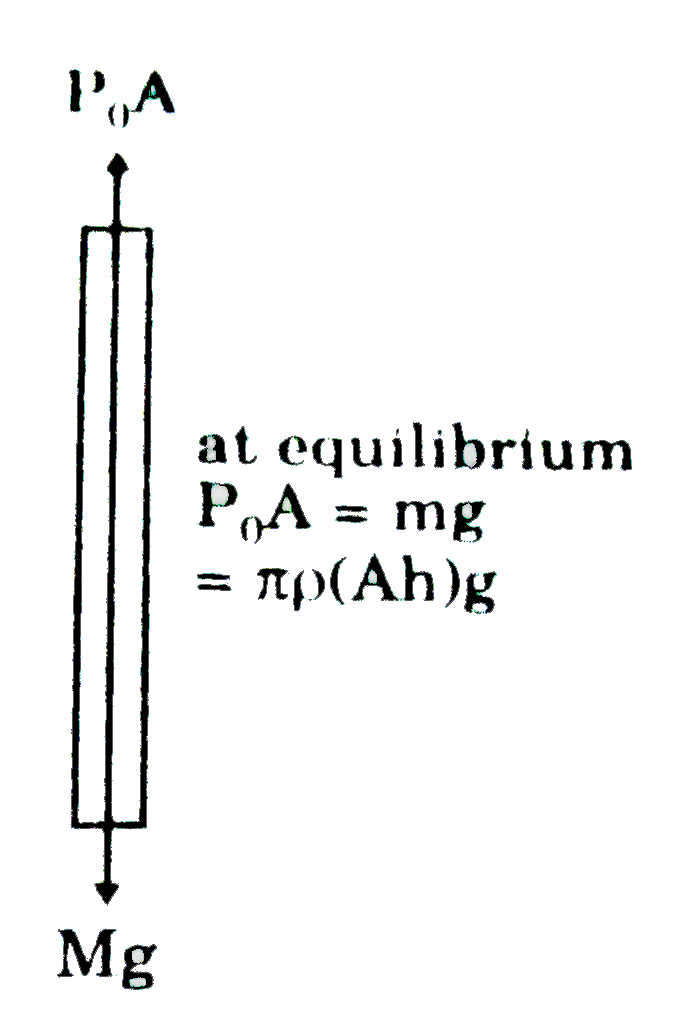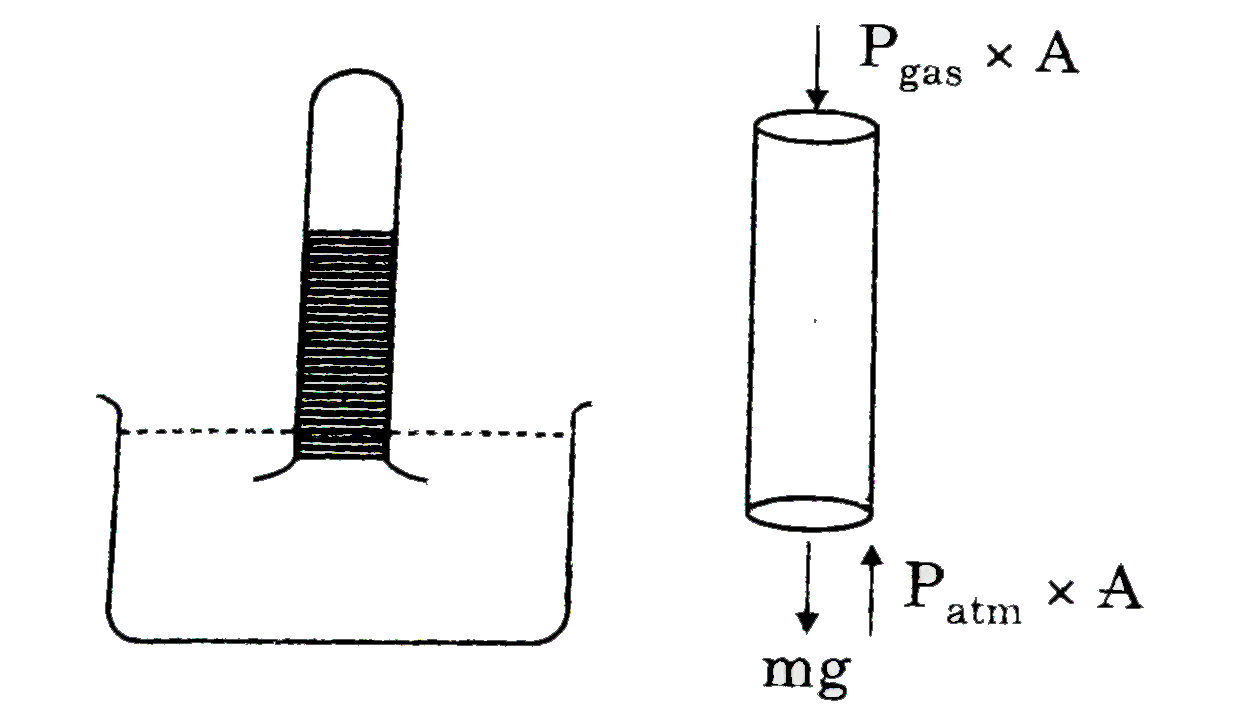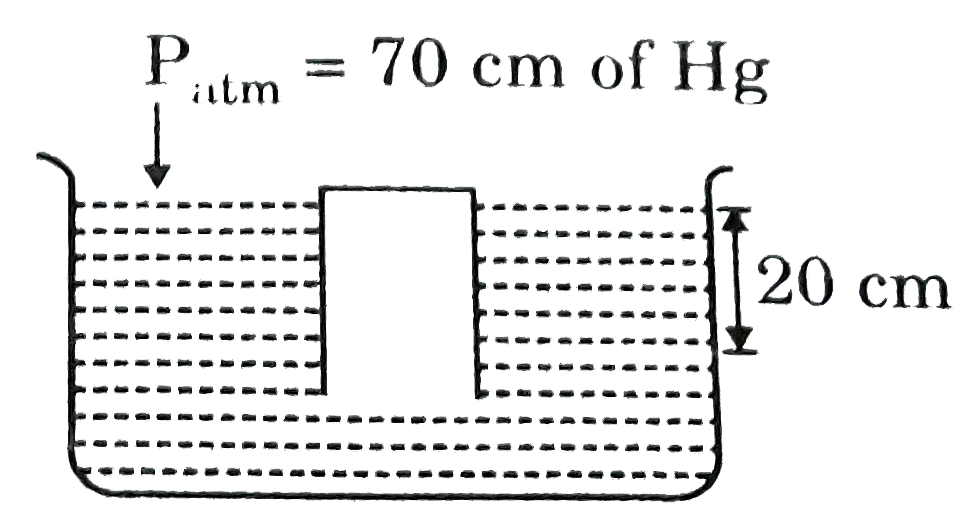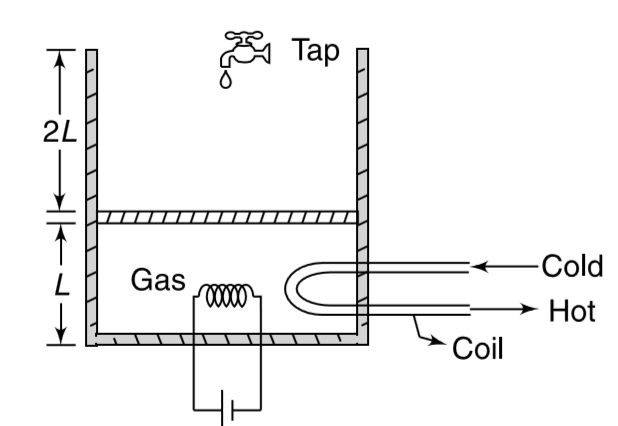Give reasons
(a) A gas fills completely the vessel in which it is kept.
(b) A gas exerts pressure on the walls of the container.
(c) A wooden table should be called a solid.
(c) We can easily move our hand in air but to do the same through a solid blocked of wood. we need a karate expert.
(a) The particles of a gas have high kinetic energy and negligible forces of attraction amongst them. Due to this the particles of a gas are constantly moving with high speeds in all the directions and the gas completely fills the vessel in which it is kept.
(b) Because of high kinetic energy and negligible forces of attraction, the particles of a gas move with high speeds in all directions. When the fast moving gas particles hit the walls of its container from inside, they exert a pressure (called gas pressure). Thus, the pressure exerted by a gas is due to the constant collisions of the fast moving gas particles against the inner walls of the container.
(c ) A wooden table is a rigid object having a definite shape and a definite volume. Since a wooden table has these basic characteristics of solid state (rigidity, definite shape and definite volume), it should be called a solid.
(d) Air is a gas (or a mixture of gases) whose particles are very far apart and there are very weak forces of attraction between them. The extremely weak forces between particles of air can be overcome easily due to which we can easily move our hand in air. On the other hand, the particles of a solid block of wood are very closely packed and there are very strong forces of attraction between the particles of wood. It needs a huge outside force to overcome the strong interparticle attractions of a block of wood and break it apart by moving hand which only a karate expert can apply.
Topper's Solved these Questions
- BOOK - LAKHMIR SINGH & MANJIT KAURCHAPTER - MATTER IN OUR SURROUNDINGS EXERCISE - HOTS5videos
MATTER IN OUR SURROUNDINGS
- BOOK - LAKHMIR SINGH & MANJIT KAURCHAPTER - IS MATTER AROUND US PURE EXERCISE - NCERT BOOK PAGE 241videos
IS MATTER AROUND US PURE
- BOOK - LAKHMIR SINGH & MANJIT KAURCHAPTER - MODEL TEST PAPER 1EXERCISE - SECTION B3videos
MODEL TEST PAPER 1
Similar Questions
Give reasons
(a) A gas fills completely the vessel in which it is kept.
(b) A gas exerts pressure on the walls of the container.
(c) A wooden table should be called a solid.
(c) We can easily move our hand in air but to do the same through a solid blocked of wood. we need a karate expert.View SolutionExplain why, we can easily move our hand in air but to do the same through a plank of wood, we need a karate expert.
View Solution
Knowledge Check
- Question 1 - Select One
A barometer is an instrument that is used for the measurement of pressure The construction of the barometer is as follows:
A thin narrow calibrated capillary tube is filled to the brim with a liquid such as mercury and is inverted into a through filled with the same fluid Now depending on the external atmospheric pressure the level of the inside capillary comes to rest, then the net forces on the column should be balanced Applying force balance we get Patm×A=m×g
(A is the cross-sectional area of the capillary tube) if ρ is the density of the fluid, then m=ρ×g×h
(h is the height to which mercury has risen in the capillary)
Hence Patm×A=(ρ×g×h)×AorPatm=ρgh
Faulty Barometer:
An ideal barometer will show a correct reading only if the space above the mercury column is vacuum but in case if some gas column is trapped in the space above the mercury column then the barometer is classified as a faulty barometer. The reading of such a barometer will be less than the true pressure

For such a faulty barometer
P0A=mg+PgasA
P0=ρhg+Pgas
or ρgh=P0−Pgas
A tube closed at one end is dipped in mercury as shown in figure such that the closed surface coincides with the mercury level in the container By how much length of the tube should be extended such that the level of Hg in the tube is 5 cm below the mercury level inside the container? (Assume temperature remains constant)


 A18 cmB19 cmC24 cmD30 cm
A18 cmB19 cmC24 cmD30 cm
Give reason for the following :
(a) Gases fill up completely the vessel in which they are kept.
(b) Gases exert pressure on the walls of the containing vessel.View Solution(a) Why does a gas exert pressure ?
(b) Why does a gas fill a vessel completely ?
(c ) Why are gases so easily compressible whereas it is almost impossible to compress a solid or a liquid ?View SolutionTwo vessels A and B of equal volume (V0) are connected by a narrow tube which can be closed by a value. The vessels are fitted with piston which can be moved to change the volumes. Initially, the valve is open and the vessels contain an ideal gas (CpCv=γ) at atomspheric pressures(P0) and atmoshpeheric temperature (T0). The walls of the vessels A are diathermic and those of B are adiabatic. The value is now closed and the pistons are slowly pulled out to increase the volumes of the of the vessels to dobuled the original value.(a) Find the temperatures and pressures in the two vessels. (b) The value is now opened for sufficeint time so that the gases acquire a common tempertures and pressures . Find the new values of the temperatuere and the pressures.
View SolutionGive reasons for the following.
(a) Liquids can be taken in an open container while gas requires a closed container.
(b) Honey cannot be poured into another container as easily as water
(c) Gases flow more than liquids.
(d) As water is subjected to heating, its temperature increases and becomes constant at 100∘C even though water is still there in the container and the supply of heat is continued.
(e) When a solid substance is subjected to heating, it dissappears without leaving any liquid.View SolutionTwo containers A and B of equal volume V0/2 each are connected by a narrow tube which can be closed by a value. The containers are fitted with pistons which can be moved to change the volumes. Initially the value is open and the containers contain an ideal gas (Cp/Cv=γ) at atmospheric pressure P0 and atmospheric temperature 2T0. The walls of the containers A are highly conducting and of B are non-conducting. The value is now closed and the pistons are slowly pulled out to increase the volumes of the containers to double the original value. (a) Calculate the temperature and pressure in the two containers. (b) The value is now opened for sufficient time so that the gases acquire a common temperature and pressure. Find the new values of the temperature and the pressure.
View SolutionA cylindrical container of height 3L and cross sectional area A is fitted with a smooth movable piston of negligible weight. It contains an ideal diatomic gas. Under normal atmospheric pressure P0 the piston stays in equilibrium at a height L above the base of the container. The gas chamber is provided with a heater and a copper coil through which a cold liquid can be circulated to extract heat from the gas. Volume occupied by the heater and the liquid coil is negligible. Following set of operations are performed to take the gas through a cyclic process.
(1) Heater is switched on. At the same time a tap above the cylinder is opened. Water fills slowly in the container above the piston and it is observed that the piston does not move. Water is allowed to fill the container so that the height of water column becomes L. Now the tap is closed.
(2) The heater is kept on and the piston slowly moves up. Heater is switched off at the time water is at brink of overflowing.
(3) Now the cold liquid is allowed to pass through the coil. The liquid extracts heat from the gas. Water is removed from the container so as to keep the position of piston fixed. Entire water is removed and the gas is brought back to atmospheric pressure.
(4) The circulation of cold liquid is continued and the piston slowly falls down to the original height L above the base of the container. Circulation of liquid is stopped. Assume that the container is made of adiabatic wall and density of water is ρ. Force on piston due to impact of falling water may be neglected.
(a) Draw the entire cycle on a P–V graph.
(b) Find the amount of heat supplied by the heater and the amount of heat extracted by the cold liquid from the gas during the complete cycle.
 View Solution
View SolutionA thermally insulated vessel is divided in to two parts by a heat insulating piston which can move in the vessel without the friction. The left part of the vessel contains one mole of an ideal monatomic gas, & the right part is empty. The piston is connected to the right wall of the vessel through a spring whose length in free state is equal to the length of the vessel as shown in the figure. Determine the heat capacity C of the system, neglecting the heat capacity of the vessel, piston and spring.
 View Solution
View Solution

